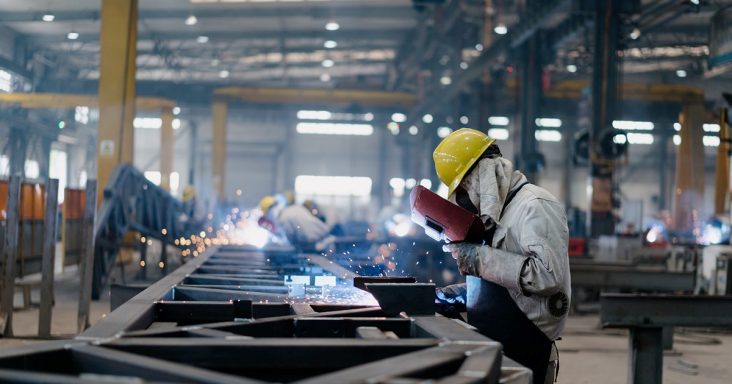Panelists note manufacturing operation benefits in Fort Smith metro
by October 14, 2024 2:05 pm 665 views

Low cost of living and location make Western Arkansas and the Fort Smith metro area a good fit for manufacturing, but the big draw is the sense of community in the manufacturing group in the area.
Such was the broad sentiment of manufacturing representatives who spoke during the Western Arkansas Manufacturing Summit held Friday (Oct. 11) at Peak Innovation Center in Fort Smith.
“Being from Texas, I’ve worked in Houston, Austin, big cities, and you just don’t have this opportunity to sit down with your peers and your competitors … and really explore what’s going to make it all better, not just what’s going to make me better, my company better,” said Tom Golke, president and CEO of Walther Arms Manufacturing, during a discussion with other panelist – Jared Blankenship, director of engineering for Pernod Ricard, Philip Poston, chief development officer for Hytrol Conveyor Co. and Mike Barr, president of WeatherBarr Windows & Doors.
The ability of the community and industries to come together creates a situation that beckons manufacturing to want to grow in the area, because that ability to work together accomplishes things like better infrastructure, Barr said.
“It happens one step at a time. That is one thing that Fort Smith does real well. It doesn’t move real fast. But we’re moving together, and we’re getting those first downs and big things can happen,” he said.
Manufacturers being able to come together, talk and collaborate is a perfect example of why companies should consider Fort Smith as a place to do business, he said.
“You don’t see this in other places. This is an unusual conglomeration of resources here. It puts us in a good place to compete when it comes to the future,” Barr said.
He said even though companies sometimes face skill gaps and shortages, he would put the Fort Smith workforce up against any other metro area.
“We have an ethic that is strong,” Barr said. “The other part is the partnerships we are going to see whether that is the Chamber (of Commerce) or higher education or K-12 (education), all of which are present in this building (Peak). You can see how the community is willing to invest and make sure we have solutions for hard questions.”
Panelists agreed that the Fort Smith area has good public and private schools, good private, and good available universities, all of which are important in order to attract not just companies but the people needed to run them.
Housing and low cost of living prices are also important. An area also has to have something that can convince families to move, Golke said.
“Having good schools, knowing schools are well funded and offer solid education, proximity to colleges helps out. … But it’s community,” he said. “Nice restaurants are important. Are there sushi bars, cigar bars? You need nightlife. We have some of that. …We are a large enough town with a small town vibe.”
Adding to that “good quality of place” is the trail system in Fort Smith and the surrounding area, Poston said, noting that when he first moved to Fort Smith he and his family picked the location of the home they purchased based on the trails that were nearby.
Blankenship said you can not discount Fort Smith’s location in the country. The river, with its coming improvements, and railroad accessibility are great for shipping. Interstate 49 and Interstate 40 allow easy access to Interstate 44 and Interstate 35.
“You’ve got north, south, east or west. You’ve got a railhead to deliver bulk spirits into the site to do the bottling and finish the products. There is significant advantage here,” Blankenship said. “Also, think about the history of this town. … There is a reason why Pernoid looks at Fort Smith as the North America center for what they want to do from a manufacturing standpoint.”
Manufacturing jobs in the Fort Smith metro were an estimated 19,700 in August, up 3.7% compared with the 19,000 in August 2023, but down almost 37% from peak sector employment of 31,200 in June 1999. Post peak employment jobs in the sector first fell below 20,000 with 19,900 in October 2009. Sector employment has remained below 20,000 since February 2011, according to figures from the U.S. Bureau of Labor Statistics.
Fort Smith metro manufacturing jobs in August were up 18.7% since August 2020, far outpacing state manufacturing job growth of 6.1% in the same period.
